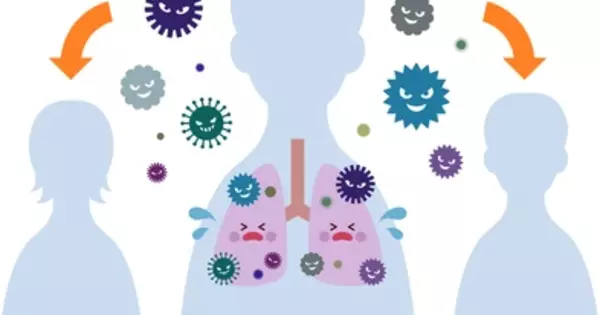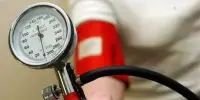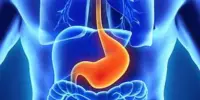According to a new study, the acidity of aerosols in indoor air can vary. This acidity determines how long viruses remain infectious in the air, which has far-reaching implications for virus transmission and containment strategies.
Viruses such as SARS-CoV-2, influenza, and others spread from person to person primarily via aerosols. These are finely dispersed liquid-containing particles suspended in the air that an infected person expels when coughing, sneezing, or simply exhaling, and can be inhaled by another person. That is why it is widely considered important to effectively ventilate rooms and filter indoor air: lowering aerosol particle concentrations in homes, offices, and public transportation vehicles can reduce the risk of infection.
How do suspended particles become acidic?
It is unknown how long viruses in aerosols can remain infectious. According to some studies, the humidity and temperature of the air may play a role in virus persistence. The chemical composition of exhaled aerosols, particularly their acidity and interactions with indoor air, has previously been underestimated. Many viruses, such as the influenza A virus, are acid-sensitive; exhaled aerosol particles can absorb volatile acids and other airborne substances from the indoor air, such as acetic acid, nitric acid, or ammonia, affecting the acidity (pH) levels of the particles.
There had been no research on the effect of post-exhalation acidification on the viral load carried by aerosols. A group of researchers from ETH Zurich, EPFL, and the University of Zurich has now looked into this.
They show for the first time in a new study how the pH of aerosol particles changes seconds and hours after exhalation under different environmental conditions. They also demonstrate how this affects the viruses contained in the particles. The research was recently published in the journal Environmental Science and Technology.
Acid removal is likely to be even more pronounced in museums, libraries, and hospitals equipped with activated carbon filters. The relative risk of influenza transmission in such public buildings can be significantly higher than in buildings supplied with unfiltered outside air.
Exhaled small aerosol particles become acidic quickly
According to the researchers, the exhaled aerosols acidify very rapidly, faster than some might expect. How fast they do this depends on the concentration of acid molecules in the ambient air and the size of the aerosol particles. The team examined tiny droplets – a few micrometres across – of nasal mucus and of lung fluid synthesised specifically for the study. In typical indoor air, it took these droplets only about 100 seconds to reach a pH of 4, which is roughly equivalent to the acidity of orange juice.
The pH value is a measure of acidity: a neutral solution has a pH of 7, acidic solutions have a pH less than 7, and basic solutions have a pH greater than 7. The researchers believe that nitric acid from the outside air contributes significantly to aerosol acidification. It enters interior spaces through open windows or when ventilation systems draw in outside air. Nitric acid is formed through the chemical transformation of nitrogen oxides (NOx), which are primarily released into the environment as a byproduct of combustion processes, such as diesel engine exhaust gases and domestic furnace exhaust gases. As a result, cities and metropolitan areas have an abundant supply of nitrogen oxides and thus nitric acid.
Nitric acid quickly adheres to surfaces, furniture, clothing and skin but is taken up by the tiny exhaled aerosol particles as well. This increases their acidity and lowers their pH.

Aerosol pH is key to virus inactivation
The researchers also discovered that the acidic environment has a significant impact on how quickly viruses trapped in exhaled mucus particles are inactivated. The acid sensitivities of the two types of viruses were discovered to be different: SARS-CoV-2 is so acid-resistant that experts initially doubted their findings. A pH of less than 2, i.e. extremely acidic conditions such as those found in undiluted lemon juice, was required to inactivate the coronavirus. Such conditions are not possible in typical indoor air.
Influenza A viruses, on the other hand, are inactivated after just one minute in acidic conditions of pH 4. Freshly exhaled mucus particles reach this level in less than two minutes in typical indoor environments. Adding the time it takes to acidify the aerosol to the time it takes to inactivate the flu viruses at a pH 4 or lower, it quickly becomes clear that 99 percent of influenza A viruses will be inactivated in the aerosol after roughly three minutes. This short time span surprised the researchers.
SARS-CoV-2 is a different story: because aerosol pH in typical indoor spaces rarely falls below 3.5, it takes days for 99 percent of coronaviruses to be inactivated. The study found that in well-ventilated rooms, inactivation of influenza A viruses in aerosols works effectively, and the threat of SARS-CoV-2 can be reduced as well. However, in poorly ventilated rooms, the risk that aerosols contain active viruses is 100 times higher than in well-ventilated rooms.
This leads the researchers to advise that indoor rooms be ventilated frequently and well, so that the virus-laden indoor air and basic substances such as ammonia from emissions of people and indoor activities are carried outside, while acidic components of the outside air can enter the rooms in sufficient quantities.
Filtration removes acids from the air
Even normal air conditioning systems with air filters can lead to a reduction in volatile acids. “Acid removal is likely to be even more pronounced in museums, libraries, and hospitals equipped with activated carbon filters. The relative risk of influenza transmission in such public buildings can be significantly higher than in buildings supplied with unfiltered outside air” The article is written by the team.
In response, the research team could imagine adding small amounts of volatile acids like nitric acid to filtered air while removing basic substances like ammonia to accelerate the acidification of the aerosols. According to the study, a nitric acid concentration of 50 ppb (parts per billion of air, which is 1/40th of the 8-hour legal limit in the workplace) could reduce the risk of COVID-19 infection by a thousandfold.
A long road to a healthier indoor climate
However, the researchers are aware that such a measure will be highly contentious because it is unclear what consequences such acid levels may have. To protect works of art and books, museums and libraries thoroughly filter the air. Civil engineers would be dissatisfied as well, because the addition of acids could damage materials or conduits. As a result, the researchers involved in the study agree that long-term studies are required to assess the risks to people and structures.
Therefore, the use of volatile acids to efficiently inactivate viruses in aerosol particles may not be easily established as a virus control measure, while the removal of ammonia – a compound readily emitted by people and a substance that stabilizes viruses as it elevates pH – should not be controversial.
















